Gopher Tortoise
- April 2, 2024
- 0 comment
The Gopher Tortoise, known scientifically as Gopherus polyphemus, is a unique reptile native to the southeastern United States, particularly prevalent in regions with sandy soils such as pine forests, scrublands, and coastal dunes. Recognized by its distinctive domed shell and robust limbs, the Gopher Tortoise plays a crucial ecological role in its habitat. These tortoises are renowned for their burrowing behavior, creating extensive networks of underground tunnels that provide shelter for a variety of wildlife species. Despite their slow-moving nature, Gopher Tortoises are adept diggers, excavating burrows with their powerful limbs. During the mating season, males engage in elaborate courtship displays to attract females, leading to the deposit of eggs in shallow nests dug by the females.

Gopher Tortoises face numerous threats, including habitat loss, fragmentation, and predation, leading to their classification as a threatened species in several states. Efforts to conserve these iconic reptiles include habitat restoration, captive breeding programs, and public awareness campaigns. Through educational initiatives and community involvement, conservationists strive to raise awareness about the importance of Gopher Tortoises and promote their protection for future generations.
| Specifications | Description |
|---|---|
| Scientific Name | Gopherus polyphemus |
| Common Name | Gopher Tortoise |
| Habitat | Sandy habitats in the southeastern United States, including pine forests, scrublands, and coastal dunes |
| Size | Adults typically reach lengths of up to 14 inches and weigh between 10 to 15 pounds |
| Shell | Distinctive domed shell, often brownish or tan in color, serving as protection against predators and environmental hazards |
| Burrowing Behavior | Known for extensive burrowing activity, creating networks of underground tunnels providing shelter for various wildlife |
| Diet | Primarily herbivorous, feeding on a variety of vegetation such as grasses, fruits, and leaves |
| Reproduction | Females lay eggs in shallow nests, with incubation lasting two to three months |
| Conservation Status | Listed as a threatened species due to habitat loss, fragmentation, and other human-induced factors |
| Conservation Efforts | Include habitat restoration, captive breeding programs, and public awareness campaigns |
Gopher Tortoise: A Fascinating Species of the American Southeast
If you have ever strolled through the sandy habitats of the American Southeast, you may have encountered a peculiar creature with a domed shell leisurely making its way through the underbrush. This creature is none other than the Gopher Tortoise (Gopherus polyphemus), a fascinating reptile with a significant ecological role in its native ecosystems.
Physical Characteristics
Here are the physical characteristics of the Gopher Tortoise:
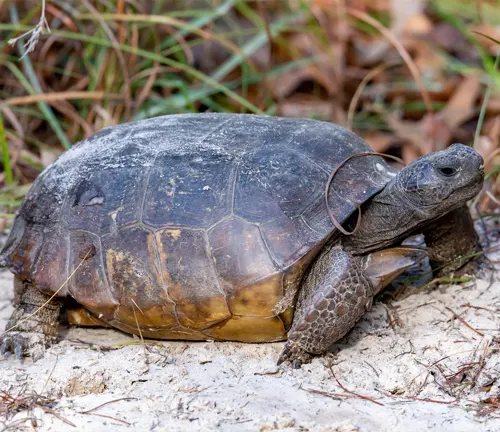

- Shell: The Gopher Tortoise has a distinctive domed shell that serves as protection against predators and environmental hazards. The shell is typically brownish or tan in color and is composed of fused bony plates called scutes.
- Size: Adults of the species typically reach lengths of up to 14 inches (35 centimeters). However, some individuals may grow larger, and there are documented cases of Gopher Tortoises exceeding 16 inches (40 centimeters) in length.
- Weight: Adult Gopher Tortoises generally weigh between 10 to 15 pounds (4.5 to 6.8 kilograms). However, weight can vary depending on factors such as age, sex, and environmental conditions.
- Limbs: Gopher Tortoises have sturdy limbs with strong claws, which they use for digging burrows and moving through their sandy habitat. Their forelimbs are particularly robust and well-suited for excavating burrows.
- Head: The head of the Gopher Tortoise is relatively small compared to its body size and is equipped with a sharp beak-like mouth. Their eyes are located on the sides of their head, providing them with a wide field of vision.
- Coloration: The coloration of Gopher Tortoises can vary depending on their habitat, ranging from light brown to dark tan. Some individuals may also exhibit patterns or markings on their shells.
- Scutes: The shell of the Gopher Tortoise is covered in overlapping bony plates called scutes. These scutes provide protection and support for the tortoise’s body and can vary in size and shape between individuals.
- Sexual Dimorphism: Male and female Gopher Tortoises can typically be distinguished by subtle differences in size and shape. Males often have longer and thicker tails compared to females, while females may have a slightly broader shell.
Habitat and Distribution
Habitat
The Gopher Tortoise is primarily found in habitats with well-drained sandy soils, particularly in the southeastern United States. These habitats include pine forests, scrublands, coastal dunes, and grasslands. Gopher Tortoises are well adapted to sandy environments and can be found in both upland and lowland areas. They are particularly dependent on habitats with abundant vegetation for foraging and sandy soil for burrowing.
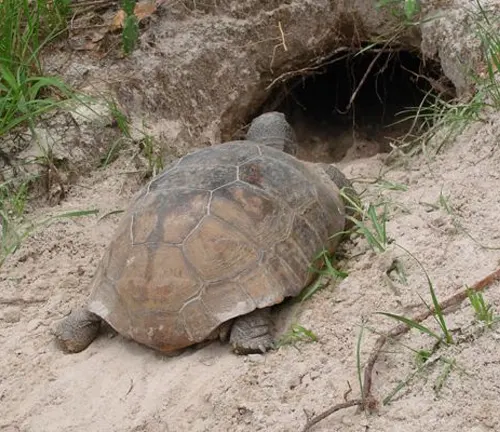
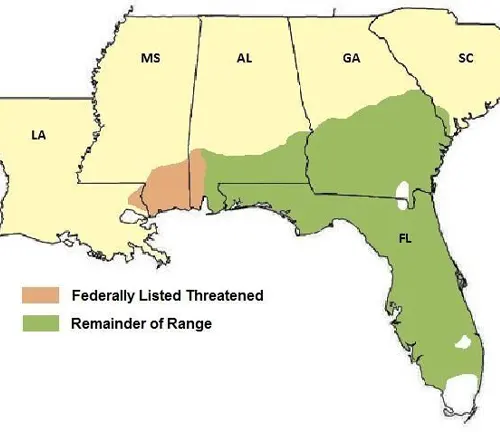
Distribution
The native range of the Gopher Tortoise extends throughout the southeastern United States, spanning from eastern Louisiana to the eastern coast of South Carolina, and as far north as southern Georgia. Historically, they were also found in parts of Alabama, Mississippi, and Florida. However, due to habitat loss and fragmentation, Gopher Tortoise populations have become increasingly restricted. Today, they are mainly found in isolated populations within protected areas such as state parks, wildlife refuges, and conservation lands. Conservation efforts are underway to preserve and restore Gopher Tortoise habitats and populations throughout their range.
Behavior and Lifestyle
Behavior
Gopher Tortoises are primarily solitary animals and are most active during the warmer months of the year. They are primarily diurnal, meaning they are active during the day and rest at night. One of the most notable behaviors of Gopher Tortoises is their burrowing activity. They are proficient diggers and excavate extensive networks of burrows in sandy soils. These burrows serve as shelters from extreme temperatures, predators, and other environmental hazards. Gopher Tortoises may have multiple burrows within their home range, which they use for resting, thermoregulation, and nesting.
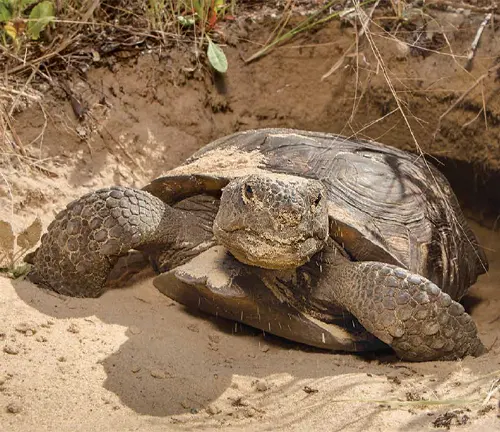
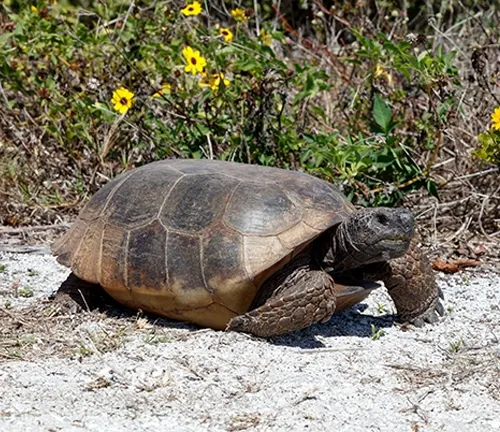
Lifestyle
The lifestyle of Gopher Tortoises revolves around their burrowing behavior and herbivorous diet. They spend much of their time foraging for vegetation, including grasses, leaves, fruits, and flowers. Gopher Tortoises are considered ecosystem engineers due to their burrowing activities, which create habitat and microenvironments for other wildlife species. Their burrows provide shelter for a variety of animals, including mammals, reptiles, amphibians, and invertebrates. Despite their slow-moving nature, Gopher Tortoises are capable of covering considerable distances within their home ranges, particularly during the breeding season.
Reproduction
Reproduction
Gopher Tortoises typically reach sexual maturity between the ages of 12 to 15 years old. Reproduction in Gopher Tortoises is seasonal, typically occurring in the spring and early summer months. During this time, males become more active and engage in courtship behavior to attract females.
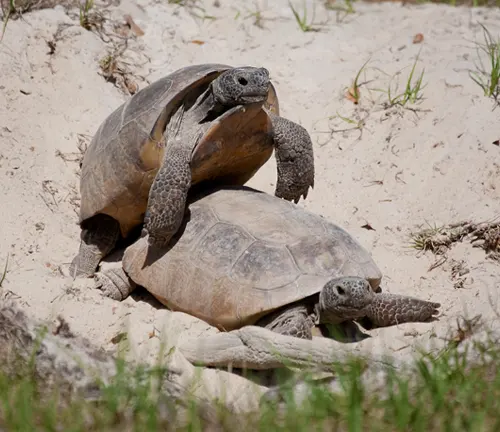
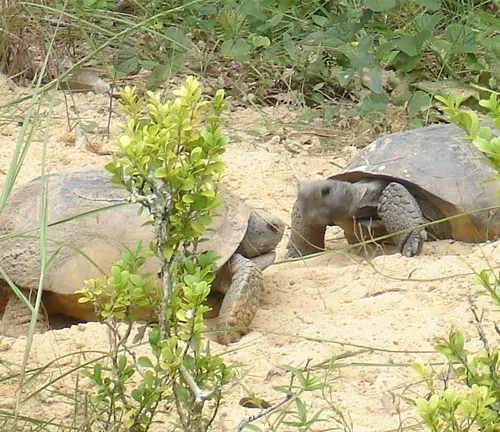
Mating Behavior
Male Gopher Tortoises engage in elaborate courtship displays to attract females. This may include head bobbing, circling, and vocalizations. Once a female is receptive, mating occurs, often taking place near or inside the female’s burrow.
Nesting and Egg Incubation
After mating, females dig shallow nests in sandy soil using their hind legs. They may lay anywhere from 3 to 15 eggs, depending on factors such as age, size, and environmental conditions. Once the eggs are laid, the female covers them with soil and leaves them to incubate. Incubation typically lasts for two to three months, with hatchlings emerging in late summer or early fall.
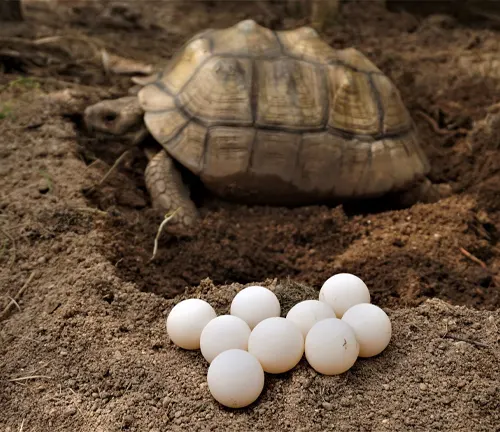
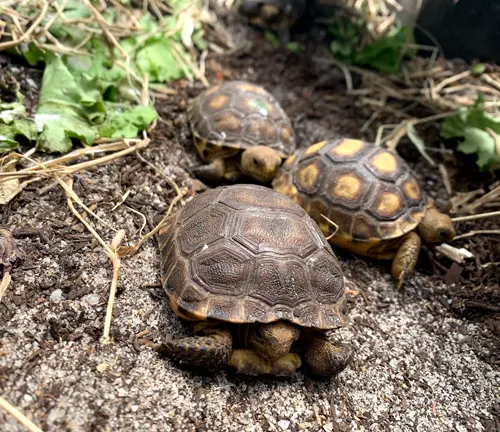
Hatchlings
Gopher Tortoise hatchlings are small and vulnerable, measuring only a few inches in length. Upon hatching, they must dig their way out of the nest and navigate their way to the surface. Hatchlings are independent from birth and must fend for themselves, including finding food and shelter.
Conservation Status
Despite their ecological importance, Gopher Tortoises face numerous threats, including habitat loss, fragmentation, and predation. As a result, they are listed as a threatened species in several states and are protected under various conservation laws. Efforts to conserve Gopher Tortoises include habitat restoration, captive breeding programs, and public awareness campaigns.
Human Interaction
Human activities, such as urban development, agriculture, and road construction, pose significant challenges to Gopher Tortoise populations. Encounters with vehicles on roadways often prove fatal for these slow-moving reptiles. To mitigate these impacts, conservation organizations work tirelessly to advocate for the protection of Gopher Tortoise habitats and implement measures to reduce human-wildlife conflicts.
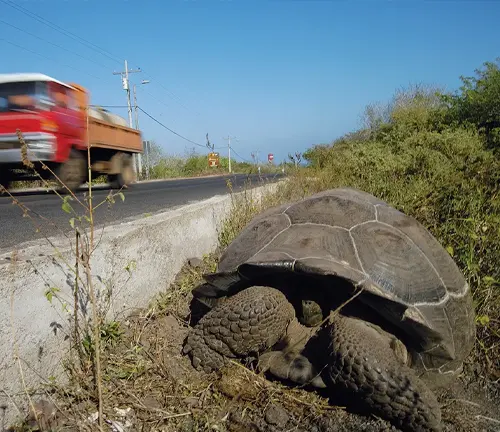
Significance in Ecosystems
As a keystone species, Gopher Tortoises play a vital role in ecosystem dynamics. Their burrows provide shelter for a diverse array of organisms, contributing to biodiversity and ecosystem resilience. By engineering their habitats, Gopher Tortoises influence soil composition, plant growth, and nutrient cycling, thereby shaping the landscapes they inhabit.
Cultural and Historical Importance
Throughout history, Gopher Tortoises have held cultural significance for indigenous peoples of the Southeast. Native American tribes often revered these creatures as symbols of wisdom, longevity, and resilience. Today, Gopher Tortoises continue to inspire awe and admiration, serving as ambassadors for the conservation of native wildlife.
Educational Initiatives
Educational programs and outreach efforts play a crucial role in raising awareness about the importance of Gopher Tortoises and their habitats. By engaging communities, schools, and stakeholders, conservationists strive to foster appreciation for these remarkable reptiles and inspire action to protect their future.
Challenges and Future Outlook
Despite ongoing conservation efforts, Gopher Tortoises face an uncertain future in the face of climate change and habitat degradation. To ensure their survival, it is imperative that we continue to prioritize their protection and implement sustainable land management practices that safeguard their habitats for generations to come.
Different Species
Gopherus polyphemus
The most well-known species commonly referred to as the Gopher Tortoise, native to the southeastern United States.

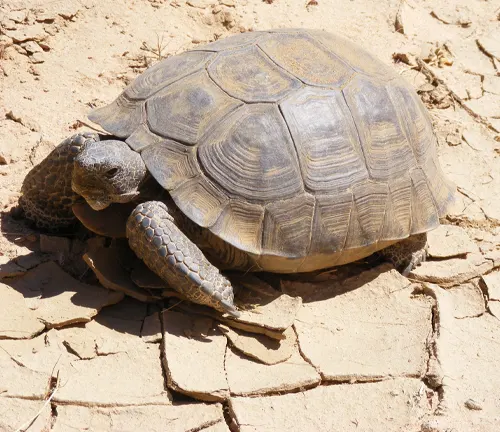
Gopherus agassizii
The Desert Tortoise, found in the Mojave and Sonoran Deserts of the southwestern United States and northwestern Mexico.
Gopherus flavomarginatus
The Bolson Tortoise, native to the Chihuahuan Desert in Mexico.

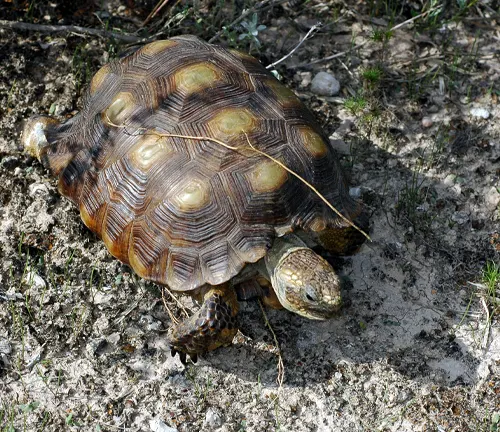
Gopherus berlandieri
The Texas Tortoise, found in the southern United States and northeastern Mexico.
Gopherus evgoodei
The Goode’s Thornscrub Tortoise, a species endemic to a small region in Mexico.

Frequently Asked Questions (FAQs)
- What is a Gopher Tortoise?
A Gopher Tortoise is a species of tortoise native to the southeastern United States known for its burrowing behavior and ecological significance. - Where do Gopher Tortoises live?
Gopher Tortoises inhabit sandy habitats in the southeastern United States, including pine forests, scrublands, and coastal dunes. - How big do Gopher Tortoises get?
Adults typically reach lengths of up to 14 inches and weigh between 10 to 15 pounds. - What do Gopher Tortoises eat?
Gopher Tortoises are primarily herbivorous, feeding on a variety of vegetation such as grasses, fruits, and leaves. - How do Gopher Tortoises reproduce?
Females lay eggs in shallow nests dug in sandy soil, with incubation lasting two to three months. - Are Gopher Tortoises endangered?
Yes, Gopher Tortoises are considered a threatened species due to habitat loss, fragmentation, and other human-induced factors. - Do Gopher Tortoises have predators?
Yes, Gopher Tortoises face threats from predators such as raccoons, foxes, and domestic pets. - How long do Gopher Tortoises live in captivity?
Gopher Tortoises can live for several decades in captivity with proper care and habitat management. - Why are Gopher Tortoises important to ecosystems?
Gopher Tortoises are considered a keystone species, playing a crucial role in shaping ecosystems through their burrowing activities and providing shelter for other wildlife. - What are the conservation efforts for Gopher Tortoises?
Conservation efforts include habitat restoration, captive breeding programs, and public awareness campaigns to protect Gopher Tortoises and their habitats. - Can Gopher Tortoises be kept as pets?
It is illegal to keep Gopher Tortoises as pets without proper permits in most jurisdictions due to their protected status. - Do Gopher Tortoises hibernate?
While Gopher Tortoises do not hibernate in the traditional sense, they may become less active during colder months and retreat to their burrows to conserve energy.



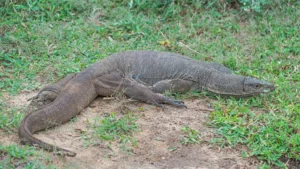


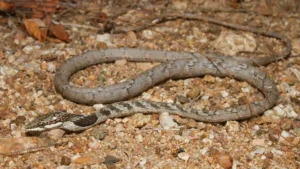
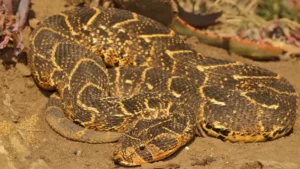
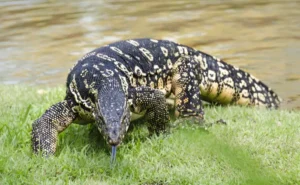
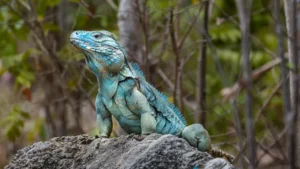

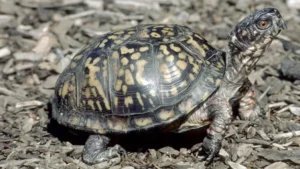
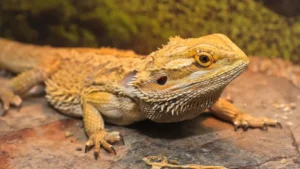
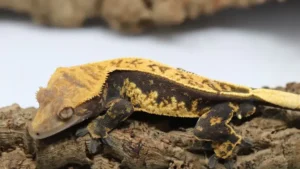
Leave your comment